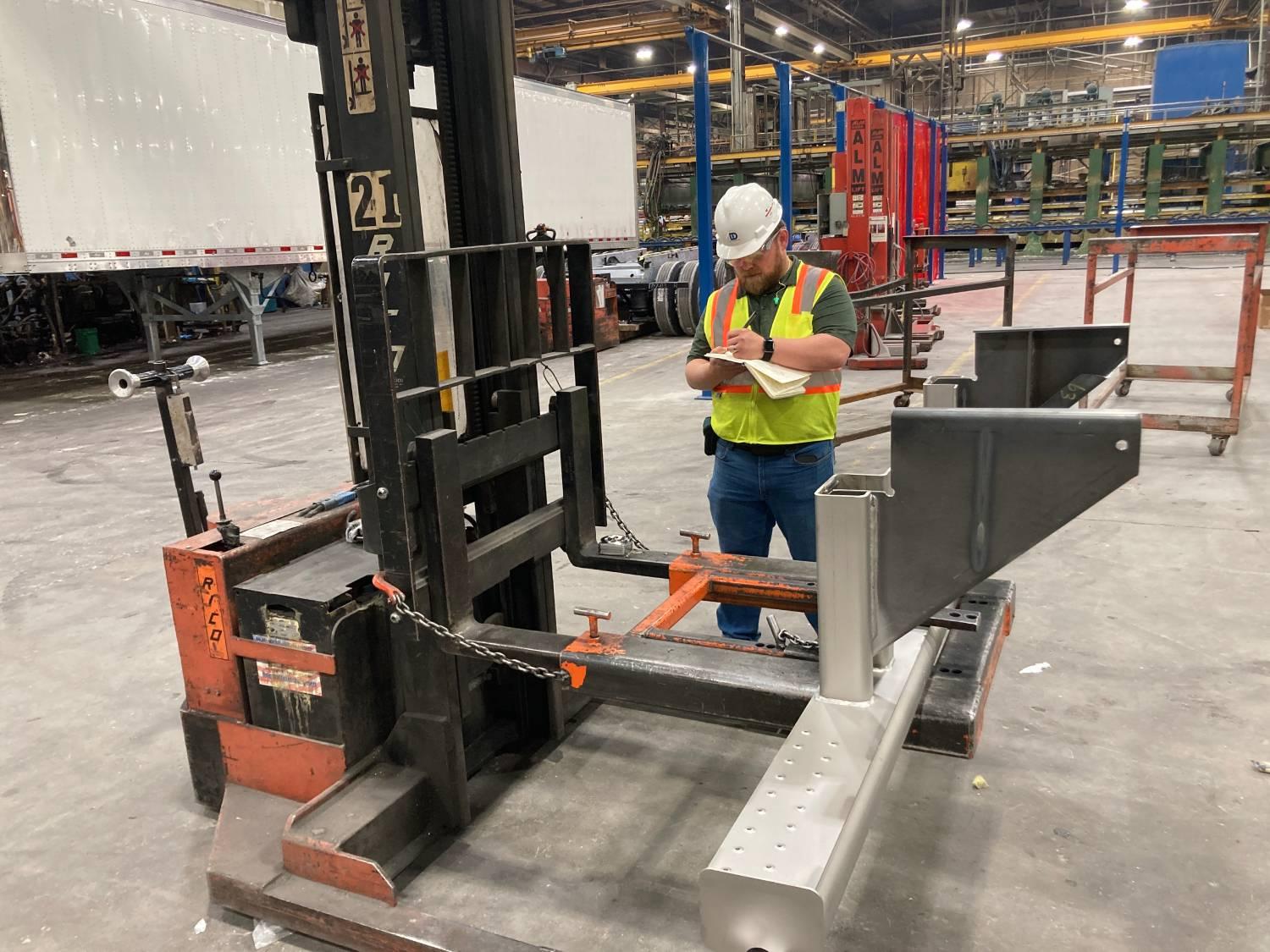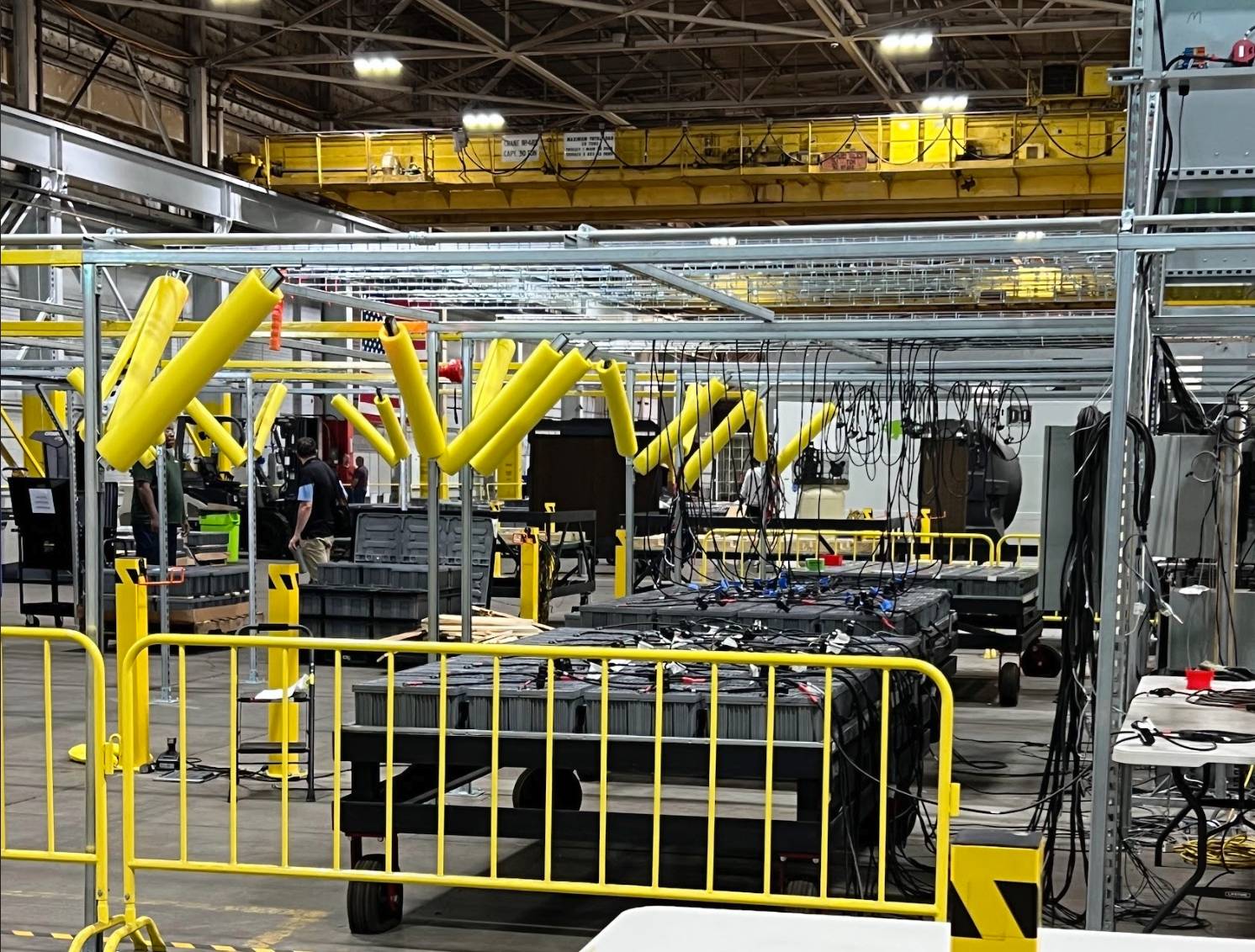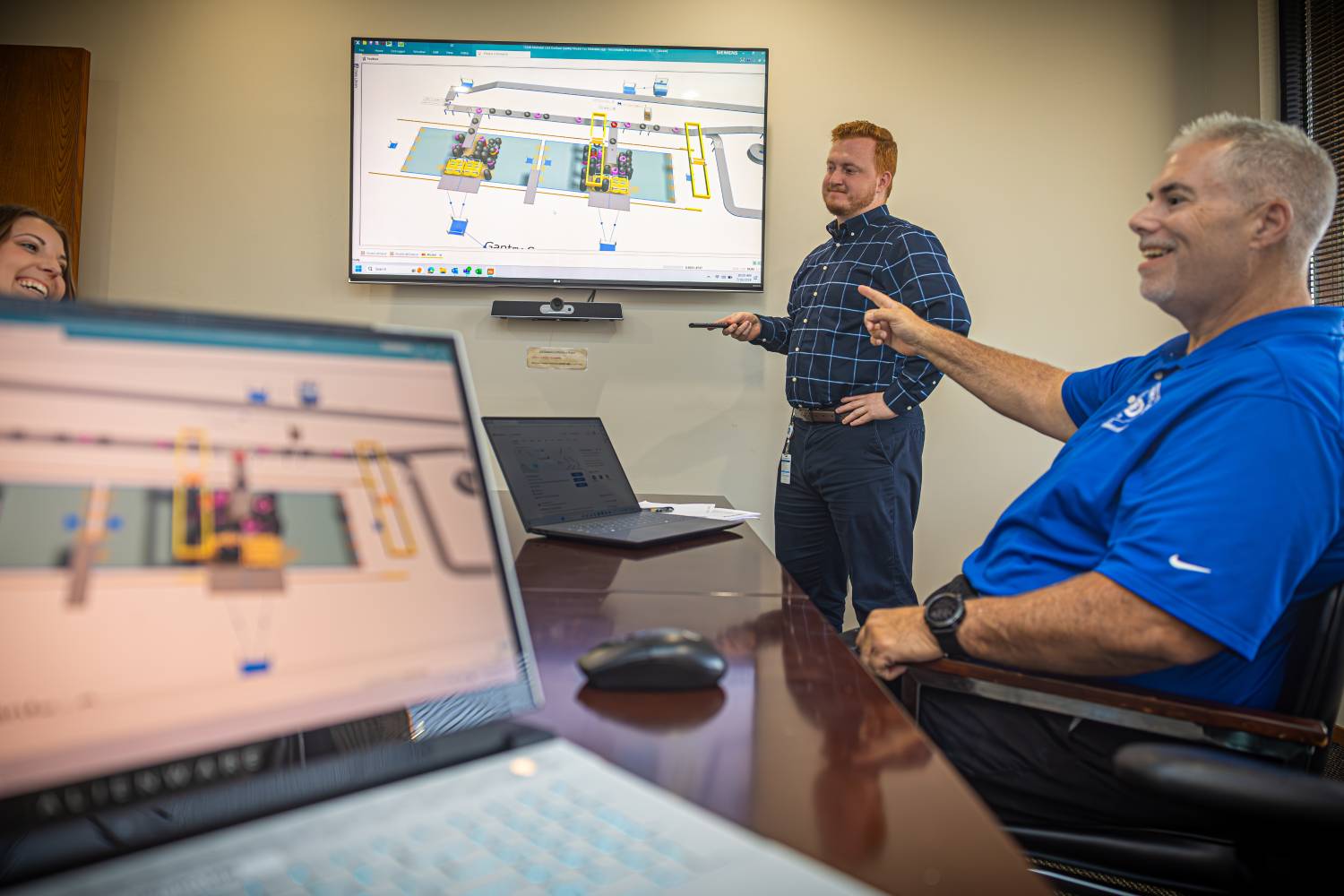Using Predictive Maintenance to Safeguard Your Assets
7 min read
October 28, 2025

Every minute of unplanned downtime can feel like an eternity in the manufacturing and engineering world. It’s not just a minor hiccup; it’s a significant financial drain that can impact everything from production schedules to customer trust. When an essential piece of equipment goes down unexpectedly, it creates a ripple effect of chaos—lost revenue, wasted labor, and a scramble to perform reactive repairs.
But what if you could see that failure coming? What if you could intervene before a problem snowballed into a costly breakdown?
That's the power of predictive maintenance. It's a proactive strategy that moves you from a reactive to a strategic position. In this article, we’ll unpack what predictive maintenance is, how it differs from preventive maintenance, and why it’s key to building a more resilient, efficient, and profitable operation.
What is Predictive Maintenance?
Predictive maintenance is a data-driven approach to maintenance that uses real-time data analysis to predict when equipment is likely to fail, allowing for proactive maintenance scheduling and preventing unexpected downtime.
Unlike preventive maintenance, which schedules maintenance at fixed intervals, predictive maintenance focuses on the actual condition of the equipment. By combining real-time sensor data, machine feedback (including machine learning and AI), and visual inspections, it identifies patterns that indicate future breakdowns.
When implemented well, predictive maintenance lowers maintenance costs, increases uptime, and boosts operational efficiency. But success isn’t automatic. It depends on selecting the right sensors and software, building analytics capabilities, and integrating those tools with your existing processes.
Now that we’ve outlined what predictive maintenance is and how it works, it’s helpful to see how it compares to the maintenance practices you’re already familiar with.
The most common question we hear is: how does predictive maintenance differ from preventive maintenance? Understanding this distinction clarifies where each approach fits into your overall strategy.

The Difference Between Predictive and Preventive Maintenance
It's common to confuse predictive and preventive maintenance—after all, they both sound proactive. However, their core difference lies in their approach. Preventive maintenance is scheduled based on time or usage, while predictive maintenance is based on the predicted condition of the equipment. Think of it this way:
Preventive maintenance is like changing the oil in your car every 3,000 miles, no matter how you've been driving.
Predictive maintenance is like having a sensor tell you your oil is breaking down and needs to be changed now, even if you just had it done last month.
This distinction is critical. While preventive maintenance is a step up from reactive repairs, it can lead to unnecessary shutdowns and component replacements, ultimately increasing maintenance costs. Predictive maintenance gives you a more precise, condition-based window into your operations. This conditions-based view bridges the gap between “knowing” and “doing”, helping you act on insights at the right time.
Once you understand how predictive maintenance differs from preventive approaches, the next step is recognizing that predictive maintenance isn’t one-size-fits-all. In fact, there are several types of predictive strategies, each using different data sources and analysis methods. Knowing the distinctions helps you choose the right mix for your operation.
Types of Predictive Maintenance
Different types of predictive maintenance exist, utilizing various data analysis methods. Here are a few common examples of predictive maintenance:
Vibration analysis
Using vibration sensors to detect bearing wear, gear problems, or imbalances in rotating equipment.
Oil analysis
Analyzing oil samples to detect lubricant degradation or the presence of wear particles, which can indicate failing components.
Acoustic monitoring
Listening for unusual sounds that may signal impending issues.
Thermal imaging
Using infrared cameras to detect abnormal heat patterns that could indicate friction or electrical problems.
The use of AI and machine learning is increasingly common in this field, enabling more accurate and sophisticated predictions. These models can leverage historical data and operational parameters to provide an even clearer picture of potential failure points. This sophisticated data science is often what separates an okay system from a truly resilient one.
Of course, predictive maintenance isn’t built in a vacuum. To accurately forecast future failures, you need a deep understanding of how and why equipment has failed in the past. This is where failure analysis comes in, transforming hindsight into foresight and giving your predictive system the data it needs to get smarter over time.
How Failure Analysis Paves the Way for Predictive Success
While predictive maintenance is about looking forward, it's intrinsically linked to looking back. The most effective predictive systems are built on lessons learned from past failure analysis studies. When a piece of equipment fails, a thorough failure analysis helps pinpoint the root cause—whether it’s a design flaw, a faulty component, or an operational issue. This information is invaluable.
By feeding past failure data into your predictive models, you create a feedback loop that improves accuracy over time. The result is a self-correcting system that gets smarter with each event, strengthening your maintenance strategy and reducing risk.
Failure analysis gives predictive maintenance its foundation, but seeing it in action makes the benefits real. Here are some examples of how predictive maintenance works on the shop floor.

Predictive Maintenance in Action
Let’s look at some real-world predictive maintenance examples:
Manufacturing:
A CNC machine’s bearings are monitoring with vibration sensors. When the data indicates unusual vibration patterns—an early sign of wear—the system alerts the maintenance team. They schedule a replacement during a planned shutdown, preventing a costly, unscheduled failure.
Parcel Handling
Conveyor belts are a critical part of any parcel facility. Using monitoring sensors and machine learning, you can predict when a motor or belt will fail, allowing you to replace it without interrupting operations.
Warehousing
Forklifts and other material handling equipment can be monitoring for anomalies in their operational parameters. Data on battery voltage, motor temperature, and hydraulic pressure can be used to predict when a breakdown is imminent.
These real-world examples show that predictive goes far beyond a simple chart or a dashboard. It’s a complete operational shift.
Lessons learned from past failures don’t just refine predictive models, they lay the groundwork for tangible gains. As predictive maintenance systems mature, the payoff becomes clear in lower costs, higher uptime, and more efficient operations. These are the benefits you can expect when predictive maintenance moves from theory to practice.
Benefits of Implementing Predictive Maintenance
The payoff for implementing predictive maintenance is substantial. Here are just a few of the many ways a solid predictive maintenance program can transform your operations:
Reduced maintenance costs
By performing maintenance only when it’s needed, you avoid unnecessary part replacements and labor expenses.
Increased equipment uptime
You can schedule repairs during planned downtime, minimizing or eliminating unplanned outages.
Improved operational efficiency
A reliable system allows you to optimize production schedules and allocate resources more effectively.
Enhanced safety
Identifying and addressing potential failures before they happen reduces the risk of catastrophic breakdowns that could endanger personnel.
Achieving these benefits at scale requires more than traditional maintenance tools. As facilities grow more complex and equipment generates massive amounts of data, advanced technologies like machine learning and AI become essential. They’re the engines behind predictive maintenance, making it faster, smarter, and more accurate over time.
The Role of Machine Learning and AI in Modern Predictive Maintenance
Machine learning and AI are revolutionizing predictive maintenance. They can:
Process vast datasets
AI models can analyze huge volumes of data from thousands of sensors across your facility, identifying subtle patterns that human analysts might miss.
Improve accuracy over time
The models learn from new data, continuously improving their ability to predict failures. This feedback loop ensures the system gets smarter the longer it's in use.
Integrate various data sources
They can combine data from different systems—including temperature, pressure, vibration, and historical maintenance logs—for a comprehensive view of asset health.
Of course, harnessing machine learning and AI isn’t as simple as flipping a switch. These tools only deliver real value when they’re implemented with the right data, processes, and expertise. That’s why having a knowledgeable partner matters, someone who can translate advanced technology into practical solutions for your facility.
Why You Need a Partner, Not Just a Plan
Implementing a full-scale predictive maintenance program can seem daunting. It requires a significant upfront investment in technology, training, and process changes. That’s why having a partner who understands the complexities and can provide clear, actionable predictive maintenance solutions makes the difference between a promising idea and real-world impact..
At Design Systems, we specialize in helping manufacturers, Engineering partners and industrial operations navigate these complex transformations. We work alongside your team to select, implement, and refine predictive maintenance systems that fit your operations. Our hands-on approach ensures the results aren’t just theoretical but show up on your production floor and your bottom line.
Choosing the right partner turns predictive maintenance from a concept into a competitive advantage. With expert guidance, you can cut through complexity, unlock real savings, and protect your operations from costly surprises. The next move is yours, take the first step toward a maintenance strategy that works as hard as your facility does.
Ready to start a conversation about transforming your maintenance strategy and securing your operations against unplanned downtime?
Book a discovery call below to explore how our predictive maintenance solutions can help you achieve a more resilient and profitable future.
Start your project with confidence
Book a discovery call with an expert manufacturing engineer from our staff.
Design Systems Inc Headquarters
38799 W 12 Mile Rd, Farmington Hills, MI 48331
US: 248-489-4300
www.ds-mfgengineering.com
Canada: 519-944-8807
www.ds-mfgengineering.ca
Mexico: (011.52) 844-254-4029
www.ds-mfgengineering.mx
